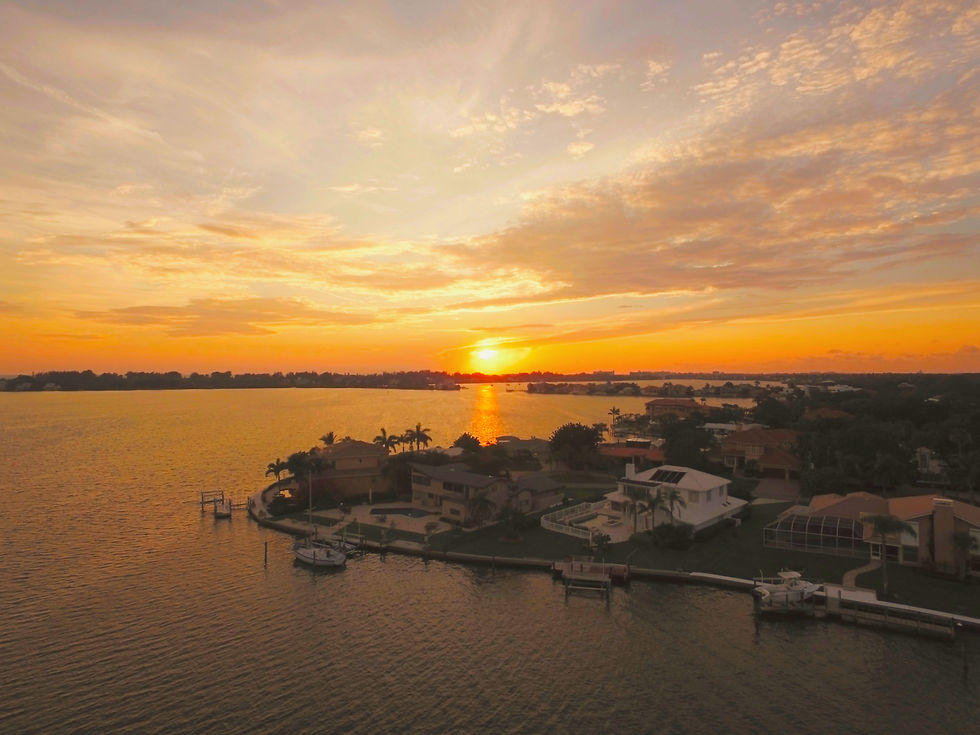The Growing Popularity of Aerial Photography in Florida
- Kent Shore

- Jul 21
- 3 min read
Aerial photography has transformed the way we view landscapes, architecture, and urban development. In Florida, the demand for striking aerial shots has surged in recent years. From the vibrant Everglades to the stunning coastlines, aerial photography provides unique perspectives that ground-level photos simply cannot capture.
Florida Aerial Photography
Florida's diverse scenery is a treasure trove for photographers using drones. With everything from pristine beaches to bustling cities, the opportunities for captivating photographs are endless. According to a recent survey, aerial photography has grown in popularity by over 70% in the last five years. Drones, equipped with high-resolution cameras, make it possible to capture breathtaking views that bring new life to landscape photography.

One major factor in this trend is technology. Drones are now more affordable and user-friendly than ever. Many hobbyists and professionals alike are eager to explore this newfound accessibility. The Federal Aviation Administration (FAA) has made strides in regulating drone usage to ensure safety while still promoting its growth. With a few simple guidelines, anyone can legally operate a drone for photography purposes, making aerial shots an attainable goal for many.
Applications of Aerial Photography
Aerial photography in Florida serves various industries. Real estate agents utilize drone shots to showcase properties from unique angles. High-resolution aerial images can highlight property boundaries, surrounding amenities, and landscape features, providing potential buyers with the information they need. Studies show that homes listed with aerial photographs can sell up to 30% faster than those without.

Furthermore, tourism boards have embraced aerial photography to promote destinations. By capturing iconic Florida landmarks—from Disney World to the famous beaches of Clearwater—tourism agencies can create compelling promotional content. Aerial imagery perfectly encapsulates the essence of a place, enticing potential visitors with stunning visuals.
Similarly, contractors and construction companies use aerial photography to monitor project developments. Drones can provide real-time images of construction sites, allowing project managers to assess progress and address potential issues without the need for time-consuming ground surveys.
Environmental Benefits and Challenges
While drones help capture beautiful visuals, they also play a crucial role in environmental monitoring. In Florida, with its unique ecosystem and wildlife, aerial photography can aid in conservation efforts. Researchers utilize drone imagery to track wildlife populations and monitor habitat changes, ensuring that ecosystem balances are maintained.

However, there are challenges to consider. Overuse of drones in sensitive areas can cause disturbances to wildlife. It is paramount that drone operators adhere to regulations, such as keeping distance from nesting sites and protected areas. Public awareness is critical, and education about responsible drone use can help alleviate potential environmental impacts.
Tips for Capturing Stunning Aerial Photos
If you’re interested in exploring aerial photography, here are some practical tips to get you started:
Know the Regulations: Before flying a drone in Florida, familiarize yourself with FAA regulations. Ensure that you have the necessary permits and that you respect no-fly zones, particularly around airports and wildlife refuges.
Choose the Right Equipment: Invest in a reliable drone with a high-quality camera. Look for features like stabilization and obstacle avoidance, which can make a significant difference in your shots.
Plan Your Shots: Scout locations ahead of time. Look for interesting landscapes, unique architecture, or captivating natural scenes that will stand out in your photographs. Determine the best times for photography, as lighting can dramatically alter your images.
Experiment with Angles: Aerial photography allows for diverse angles - don't be afraid to try different perspectives. High-angle shots can provide sweeping views, while lower angles can create more intimate captures of landscape details.
Edit Thoughtfully: Post-processing can enhance the beauty of your aerial photographs. Use editing software to adjust colors, brightness, and contrast to bring out the best in your images.
The Future of Aerial Photography in Florida
As technology evolves, the future of aerial photography in Florida looks promising. Innovations in drone technology, such as improved battery life and AI-assisted navigation, are expanding creative possibilities. The integration of these advancements means even clearer images and more innovative techniques for capturing Florida’s stunning landscapes.
Moreover, as public interest grows, more educational workshops and training programs are becoming available. These resources provide aspiring aerial photographers with valuable skills and knowledge to refine their craft. By participating in local photography groups or attending workshops, budding photographers can connect with others and share tips.
In summary, the growing popularity of aerial photography in Florida showcases how technology can elevate art and industry. It has paved the way for new opportunities across various sectors, from real estate to environmental conservation. Whether you're a professional photographer or an enthusiastic beginner, aerial photography opens up a world of possibilities in this beautiful state.





Comments